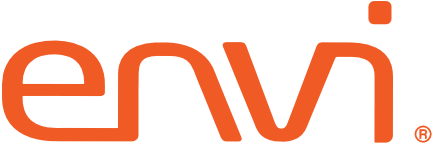
Healthcare is moving faster than ever. Most people we talk to are understaffed, stretched thin, and figuring out how to make their processes faster, more accurate, even simpler. Let’s look at ways to make this happen, starting with your purchase order (PO) processes.
There’s a whole new world, where manual order processing and paperwork delays are completely replaced, making way for efficiencies created by creating, approving, and confirming your POs electronically, with best practice processes that modernize your end-to-end workflow. Digital transformation is more than streamlining operations; it’s reshaping the landscape of PO management to be more precise and agile. Let’s look at three fundamental areas of electronic PO management: Creation, Approvals, and Confirmations.
PO Creation: Electronic POs, Every Time
It seems simple. Begin by creating an electronic PO for everything you buy, and you’ll capture your entire spend, build visibility and improve reporting. This means all med-surg items, as well as capital, maintenance and service agreements. The right procurement system makes this fast, easy and repeatable, and by doing this, you’ll bring more spend under management, and find areas for more standardization and savings:
- Are you purchasing a wide range of different products from the same category?
- Can you save money by consolidating vendors?
- Are you optimizing your contracts or still seeing off-contract spend?
- Do you capture every discount you’re eligible for, and get better tier prices?
100% electronic POs build a full purchase history, with insight into your overall spend of approved products from an enterprise-wide formulary. Your buyers get the right items at the right price from the right vendor. Speaking of vendors, make sure the vendors you choose are completely EDI-ready. You’re going to need it!
PO Approvals: Workflow that Hits on Every Cylinder
Creating an electronic PO approval workflow helps manage spend and ensure controls are in place. The impact of this is helping manage and reduce overspending, improving checks and balances for better order management, alignment with audit practices, and pointing buyers toward approved products.
You’ll start by mapping your PO processes and steps for approval. A few quick tips to get started:
- Determine roles and approval levels for each team member with approving authority
- Build in-process checks to reduce risk
- Ensure products requested are on contract
- Determine who can change a PO. Is it every approver or just a few?
- Train your team for continuous improvement – if an approver disallows a PO and returns it to the requestor, let the buyer know why so they can order correctly next time.
- Make sure to manage non-file items and update your item master when needed (best practice is a non-file quarterly review).
- Never buy products you don’t need. Excess inventory is cash sitting on your shelves.
A best practice tip is that by knowing where inventory is, you can avoid overstocking. Be sure you have the ability to transfer products with your organization, so you can move – and track – products from one location to another, and reduce overspending, waste, and excess inventory.
PO Confirmations: A Giant Step to Order Management Excellence
Electronic PO confirmations help you gain efficiency, allowing your team to manage by exception while simultaneously eliminating discrepancies. This is the ultimate step to excellence in PO management!
By using electronic confirmations and the right reporting tools, you’ll identify areas of overspending or overcharging. You can find and update data inaccuracies in your system, update contracts and improve negotiations with vendors. Most importantly, you chart the course for automation throughout your end-to-end process.
This is where you can truly impact cost. To get started:
- Make sure your vendors are EDI ready and generating 855s (EDI Purchase Order Acknowledgement)
- Practice daily order confirmations, matching electronic POs against PO acknowledgments, and flagging items that don’t match and need resolution.
- Track your discrepancy rates. If you’re doing it right, you’ll be finding discrepancies and making updates in your system, including price changes, product data and descriptions, item numbers, units of measure – any data element that’s keeping your purchase orders and acknowledgments from matching. Now, track the decrease in discrepancy rates.
- Measure cost reductions from price accuracy. Paying the right price upfront reduces overpayment, and also, downstream costs of rework.
- Track vendor performance, with vendor variance reports that will identify issues and find areas of improvement.
By automating your PO management processes, your organization is going to capture savings and efficiencies you’ve not yet achieved. If you’ve started to automate, double-check your approval and PO confirmation processes.
If you’d like to know more about how the Envi procurement solution can support fully automated POs, reach out to our team!
